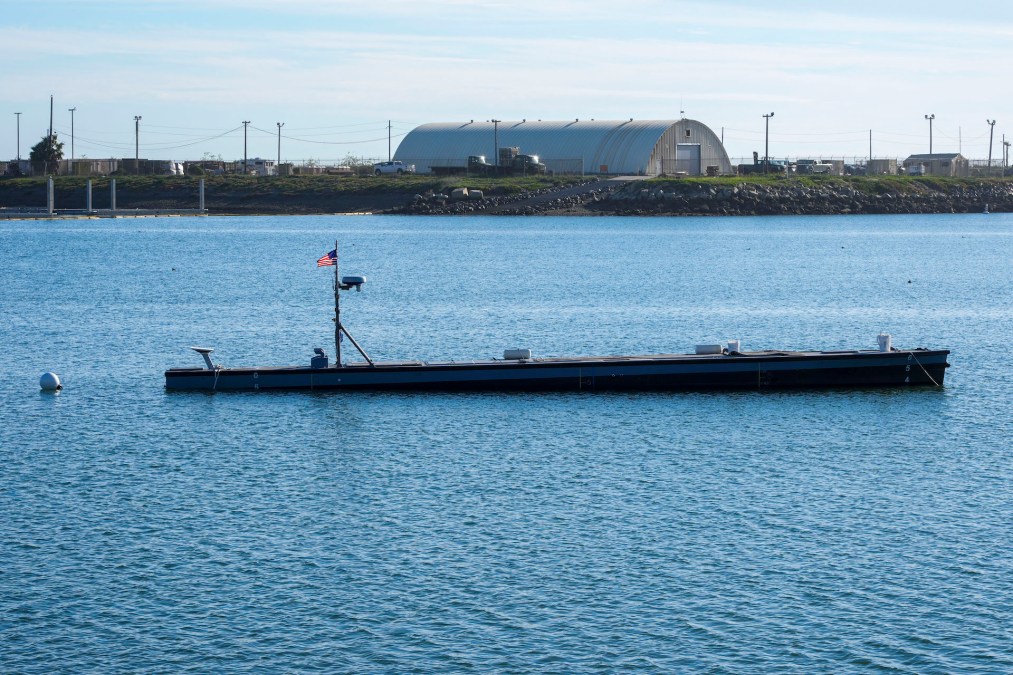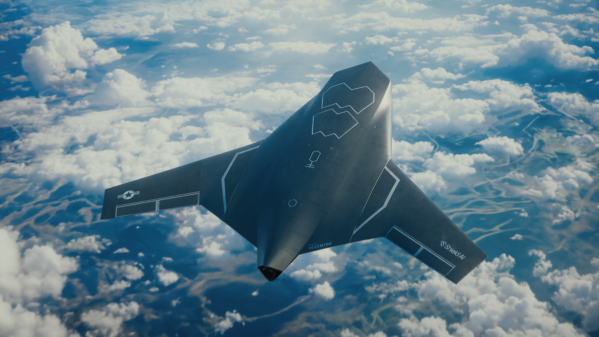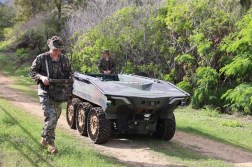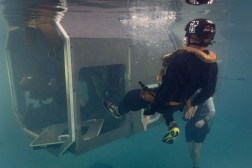Marine expeditionary force to get autonomous ‘narco boat’ for experimentation

The III Marine Expeditionary Force will soon receive a new semi-submersible unmanned platform known as the autonomous low-profile vessel, according to the commander of the Marine Corps Warfighting Laboratory.
The unit, based in the Indo-Pacific in Okinawa, Japan, will experiment with the system as the service pursues new capabilities to keep troops out of harm’s way and better position them to operate in contested environments against advanced adversaries such as China.
“One of the critical things … is how do you resupply [Marines in dangerous areas], whether that’s just food, fuel, ammunition?” Brig. Gen. Simon Doran said Wednesday at the Defense News Conference. “If you have that unit located inside a weapons engagement zone, contested logistics and the ability to maneuver in the littorals becomes key. And for that, what we’re looking at is trying to acquire systems that we deem risk worthy, meaning that we don’t necessarily want to just waste them, but we’d rather put something in there that’s autonomous, that doesn’t have humans on it, that can do some of these higher-risk missions without having personnel put in that riskier situation.”
Through the Pentagon’s Rapid Defense Experimentation Research (RDER) effort, a signature initiative of Undersecretary of Defense for Research and Engineering Heidi Shyu, the Corps was able to accelerate its autonomous low-profile vessel (ALPV) technology effort.
Doran suggested the system is similar to those that drug traffickers have used.
“Truth be told, this is just a narco boat. You know, we stole the idea from friends down south,” Doran joked. “And so this is, you know, 55-feet long, completely autonomous. It’s able to go hundreds or thousands of miles. It’s able to carry weapon systems that we have that are new. It can carry fuel. It can carry food. It can carry pretty much anything you want to put in it.”
The III MEF, a key “stand-in force” unit highlighted in Commandant Gen. Eric Smith’s new planning guidance, is about to get its hands on the technology.
“We will actually be sending the ALPV out to III MEF later on this fall for them to, you know, start to experiment with it. And it kind of goes back a little bit to the question about how do you determine which, you know, new technology or technologies will be the ones where you want to place your bets? And part of that is getting it into the hands of the Marines, you know, because our Marines find unique ways to use equipment almost each and every day,” Doran said.
The service has already been putting the technology through its paces in other venues, including at a Project Convergence capstone event earlier this year, part of which took place at Camp Pendleton, California.
In one case, the Corps was able to train a Marine to use the system in only three weeks. Using proliferated low-Earth orbit communications technology, that service member at a location in Japan was able to drive the platform off the west coast of the United States, according to Doran.
“That’s an example there of a capability that then can enable us to have resupply with a risk-worthy vessel in contested environments, and then help resupply the force,” he said.
But more experimentation is needed with these types of unmanned technologies as the Marines and the U.S. military writ large look to incorporate them into the force.
Safety is still a concern, Doran noted.
“Even though I have an autonomous vessel that can go hundreds or thousands of miles, I’ve got to have a chase ship with it to make sure that it actually works. And so then, how do you do that transition to where you’re comfortable with having these autonomous fleets, you know, traveling the seas and making sure that they’re doing it safely so that they’re not, you know, in conflict with commerce or anything else that’s out there? So that’s something we’re struggling with, but that’s part of our test plan to make sure that we can demonstrate the capability for this particular ship,” he said.






